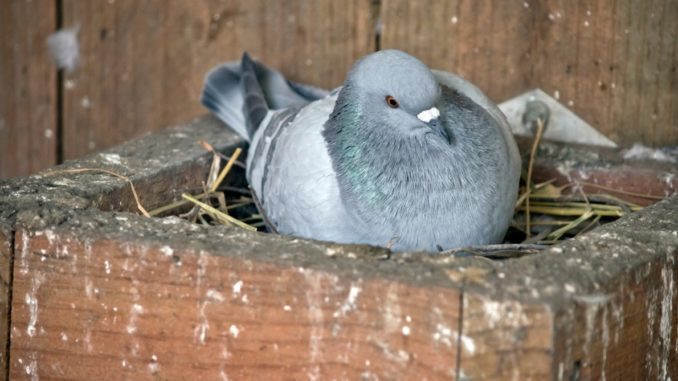
Animal wildlife is always fascinating to explore. Today, we will take a look at the feral pigeon, sometimes called a gray urban bird, who usually wanders through the parks. Although it seems like an ordinary species that can be easily found in our daily life, some interesting facts about them may surprise you.
Rock Doves vs. Domestic pigeons vs Feral pigeons: what are their differences?
One of the most recurring questions people ask is if there is a difference between “dove” and “pigeon”. According to Paul Sweet, a manager working for the department of ornithology at the American Museum of Natural History, he explained that there is no difference between these two words in scientific terminology because both of them refer to the same bird species in the Columbidae family.
In this article, we will focus on the “feral pigeons” that are the closest to humans. The latter is originally derived from “domestic pigeons” which are descendants from the “Rock Dove” in the Columbidae family. To be clearer, here are the minor differences of the 3 mentioned species:
- Rock Dove (Columba livia), or common pigeon, is considered the oldest species in the Columbidae family. They usually have a pale gray plumage and feature distinct physical characteristics of two black bars on their wings.
- Domestic pigeon, or Columba livia domestica, is a subspecies of the Rock Dove. Domestic pigeons have the ability to remember their home’s location and can surprisingly come back home even when they are released from an unknown location. For that reason, they were trained to be messengers during wars.
- Feral pigeons also called “city doves” and “street pigeons”, are the descendants of escaped domestic pigeons. However, they prefer living in human buildings in the urban area instead of in the forest or on sea cliffs like their wild ancestors. Feral pigeons’ physical characteristics are similar to rock doves but there is a bit more variety in their plumage coloration.
Where do feral pigeons nest?
Feral pigeons prefer to inhabit man-made buildings not far from their food and water supply, thus why you see a lot of them across the city, especially in parks or farms. Besides, they are also community birds so they don’t mind sharing a nesting place with their friends. Below are the favorite homes of the city doves:
- Deserted buildings:
Human buildings are an alternative to mountains and cliffs since the walls can protect them from the cold wind in the winter. Besides, there are a lot of crannies where they can hide from invaders. - The roof of our houses:
Chimneys and gutters seem a perfect place for nesting due to their good sight of view. From the highest spot, the birds can see the dangers from far away. Moreover, they can also drink water from our cisterns and stealthily eat our leftover food. - Trees:
Although city pigeons prefer living in abandoned houses or on the roof, some of them also build their nest in a tree, similar to the wild species. Nevertheless, they still choose a tree near a human house so they can easily access food and water.
What are feral pigeon’s mating habits?
Rock doves, domestic or feral pigeons have the same mating habits. They are monogamous and mate for life. During the mating season, the male pigeon will attract the female’s attention by puffing up his feathers around the neck. After that, he will try to approach the female and follow her while she slowly walks away. When she stops, the male will bow many times in front of her. Moreover, he also tries to please her by offering food. Once they are a couple, they will start mating and they will find a place for building a nest.
How do feral pigeons build their nests?
As we mentioned above, deserted man-made buildings are their favorite places. When a new couple finds the proper area for nesting, they will start constructing their nests by collecting wood sticks and other little pieces. The pigeon’s nest looks like a saucer and it is quite fragile at the beginning. Then, their little house will become more solid due to the heavy build-up of their poops.
Another fact about this featured creature, a pigeon can reuse an abandoned nest as well. Thus, if you don’t want to have new visitors living in your house area, do not forget to get rid of their old nests!
What’s the pigeon’s life cycle?
Pigeons, whether it be wild rock or feral doves, can reproduce in any season of the year but they usually breed during spring and summer. After building a lovely nest, the female will lay a total of 2 eggs, and then she will incubate for approximately 18 days.
When newborn squabs hatch from the eggs, the pigeon’s parents will feed their babies with “crop milk”. The latter is regurgitating food secreted from the esophagus of parent birds. Around 25-29 days later, the fledglings will leave the nest and they will become mature after 7 months.
Feral pigeons cleverly adapt to urban life, however, they are both adorable and annoying at the same time. We hope this article helps you understand their life cycle and finally find a solution to live in peace with nature, including these city doves!

Leave a Reply